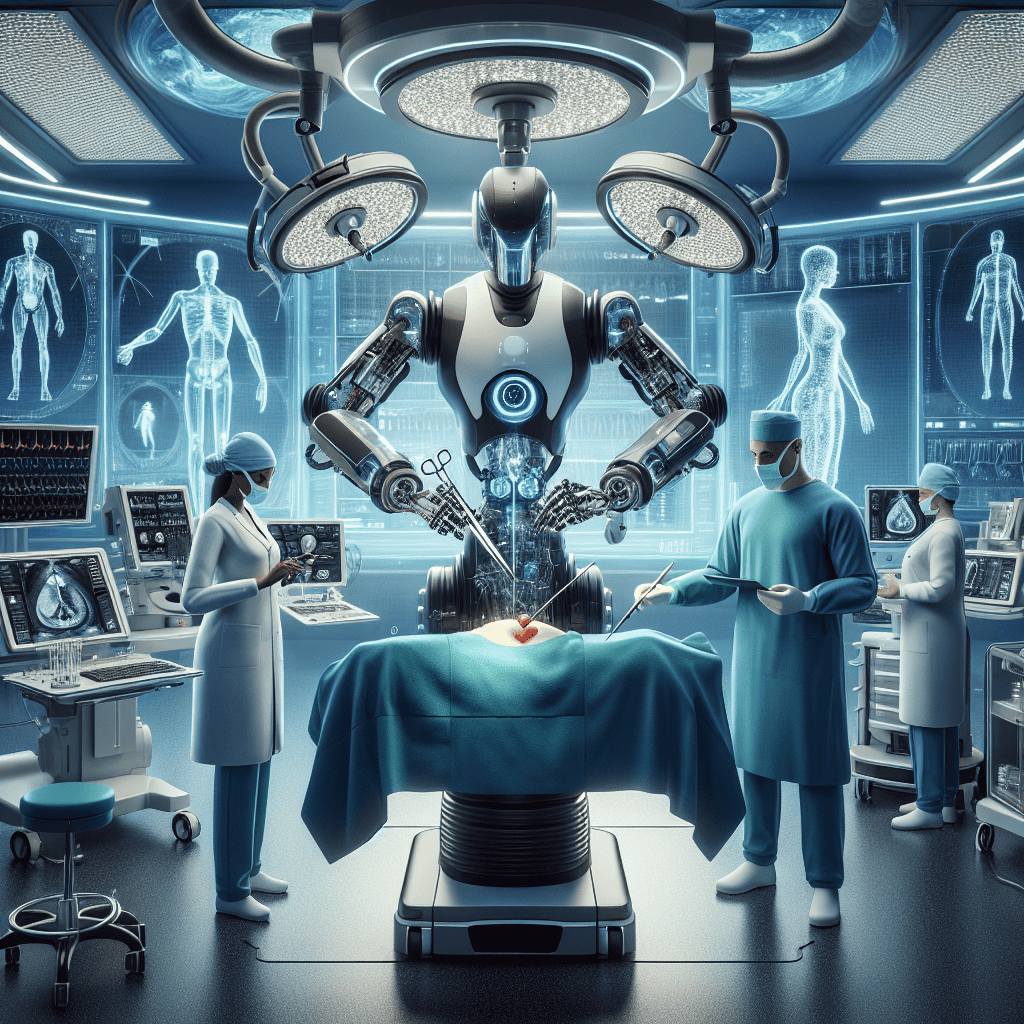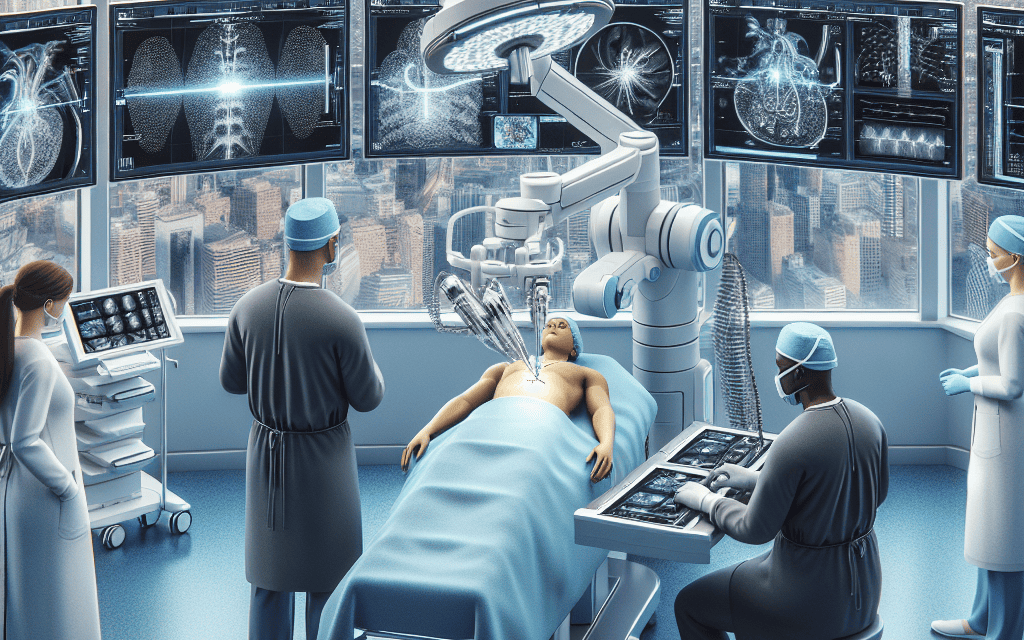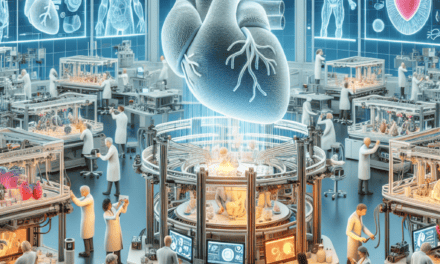-
Table of Contents
Advancements in Robotic Surgery: Precision and Possibilities

Robotic surgery has revolutionized the field of medicine, offering unprecedented precision and expanding the possibilities of surgical interventions. As technology continues to advance, the integration of robotics in surgery is becoming more sophisticated, leading to improved patient outcomes and transforming the landscape of healthcare. This article delves into the significant advancements in robotic surgery, exploring the precision it offers and the myriad possibilities it opens up for the future of medicine.
The Evolution of Robotic Surgery
The journey of robotic surgery began several decades ago, with the initial focus on enhancing the capabilities of surgeons through technology. The evolution of robotic surgery can be traced back to the late 20th century, when the first robotic systems were developed to assist in minimally invasive procedures. These early systems laid the groundwork for the sophisticated robotic platforms we see today.
One of the most significant milestones in the evolution of robotic surgery was the introduction of the da Vinci Surgical System in the early 2000s. This system, developed by Intuitive Surgical, marked a turning point in the field by providing surgeons with enhanced dexterity, precision, and control. The da Vinci system utilizes a console where the surgeon sits and controls robotic arms equipped with surgical instruments, allowing for minimally invasive procedures with greater accuracy.
Over the years, advancements in technology have led to the development of more refined robotic systems. These systems are now equipped with high-definition 3D visualization, haptic feedback, and improved instrument articulation, further enhancing the surgeon’s ability to perform complex procedures with precision. The evolution of robotic surgery has not only improved surgical outcomes but has also expanded the range of procedures that can be performed using robotic assistance.
Today, robotic surgery is utilized in various medical specialties, including urology, gynecology, cardiothoracic surgery, and general surgery. The continuous evolution of robotic systems is driven by ongoing research and development, with a focus on improving patient safety, reducing recovery times, and minimizing surgical complications.
Precision in Robotic Surgery
One of the most compelling advantages of robotic surgery is the precision it offers. Traditional open surgeries often involve large incisions, which can lead to increased pain, longer recovery times, and a higher risk of complications. In contrast, robotic surgery allows for minimally invasive procedures with smaller incisions, resulting in less trauma to the body and faster recovery.
The precision of robotic surgery is achieved through several key features:
- Enhanced Visualization: Robotic systems provide surgeons with high-definition, 3D visualization of the surgical site. This enhanced view allows for better identification of anatomical structures and improved accuracy during the procedure.
- Increased Dexterity: Robotic arms are designed to mimic the movements of a human hand but with greater precision and range of motion. This increased dexterity allows surgeons to perform intricate maneuvers that would be challenging with traditional surgical tools.
- Stability and Control: Robotic systems offer unparalleled stability, reducing the risk of hand tremors and allowing for precise movements. This stability is particularly beneficial in delicate procedures where even the slightest error can have significant consequences.
- Scalability: Robotic systems can be scaled to suit different surgical needs, from simple procedures to complex surgeries. This scalability ensures that the precision of robotic surgery can be applied across a wide range of medical conditions.
Case studies have demonstrated the precision of robotic surgery in various fields. For instance, in prostate cancer surgery, robotic-assisted procedures have shown improved outcomes in terms of cancer control and preservation of urinary and sexual function compared to traditional open surgery. Similarly, in gynecological surgeries, robotic systems have enabled surgeons to perform complex hysterectomies with minimal blood loss and faster recovery times.
Expanding Possibilities in Surgical Interventions
The integration of robotics in surgery has expanded the possibilities of surgical interventions, allowing for procedures that were once considered too risky or complex. This expansion is driven by the continuous development of robotic systems and their application in various medical specialties.
One area where robotic surgery has made significant strides is in minimally invasive procedures. The ability to perform surgeries through small incisions has opened up new possibilities for patients who may not have been candidates for traditional open surgery. For example, robotic-assisted laparoscopic surgery has become a standard approach for many abdominal procedures, offering patients reduced pain, shorter hospital stays, and quicker return to normal activities.
Robotic surgery has also enabled the development of new surgical techniques that were previously not possible. In cardiothoracic surgery, for instance, robotic systems have facilitated minimally invasive heart valve repairs and coronary artery bypass grafting, reducing the need for sternotomy and improving patient outcomes. Similarly, in neurosurgery, robotic systems are being used to perform precise brain tumor resections and spinal surgeries with minimal disruption to surrounding tissues.
The possibilities of robotic surgery extend beyond traditional surgical interventions. Researchers are exploring the use of robotics in areas such as tele-surgery, where surgeons can perform procedures remotely using robotic systems. This technology has the potential to revolutionize access to surgical care, particularly in remote or underserved areas where specialized surgical expertise may be limited.
Furthermore, advancements in artificial intelligence and machine learning are being integrated into robotic systems, enhancing their capabilities and expanding the possibilities of surgical interventions. AI-powered robotic systems can analyze vast amounts of data in real-time, providing surgeons with valuable insights and decision support during procedures. This integration of AI has the potential to further improve surgical outcomes and reduce the risk of complications.
Challenges and Limitations of Robotic Surgery
While robotic surgery offers numerous advantages, it is not without its challenges and limitations. Understanding these challenges is crucial for the continued advancement and adoption of robotic systems in surgical practice.
One of the primary challenges of robotic surgery is the high cost associated with acquiring and maintaining robotic systems. The initial investment in robotic technology can be substantial, and ongoing maintenance and training costs can add to the financial burden. This cost factor can limit the accessibility of robotic surgery, particularly in resource-constrained healthcare settings.
Another challenge is the learning curve associated with robotic surgery. Surgeons require specialized training to become proficient in using robotic systems, and this training can be time-consuming and resource-intensive. Ensuring that surgeons have the necessary skills and experience to perform robotic-assisted procedures safely and effectively is essential for maximizing the benefits of robotic surgery.
Despite the precision offered by robotic systems, there are limitations in terms of tactile feedback. Unlike traditional surgery, where surgeons can feel the tissues they are working with, robotic systems rely on visual feedback. This lack of tactile sensation can be a limitation in certain procedures where the sense of touch is critical for assessing tissue characteristics.
Additionally, robotic surgery is not suitable for all patients or procedures. Certain medical conditions or anatomical variations may make robotic-assisted surgery less feasible or effective. Careful patient selection and thorough preoperative assessment are essential to determine the suitability of robotic surgery for individual cases.</





